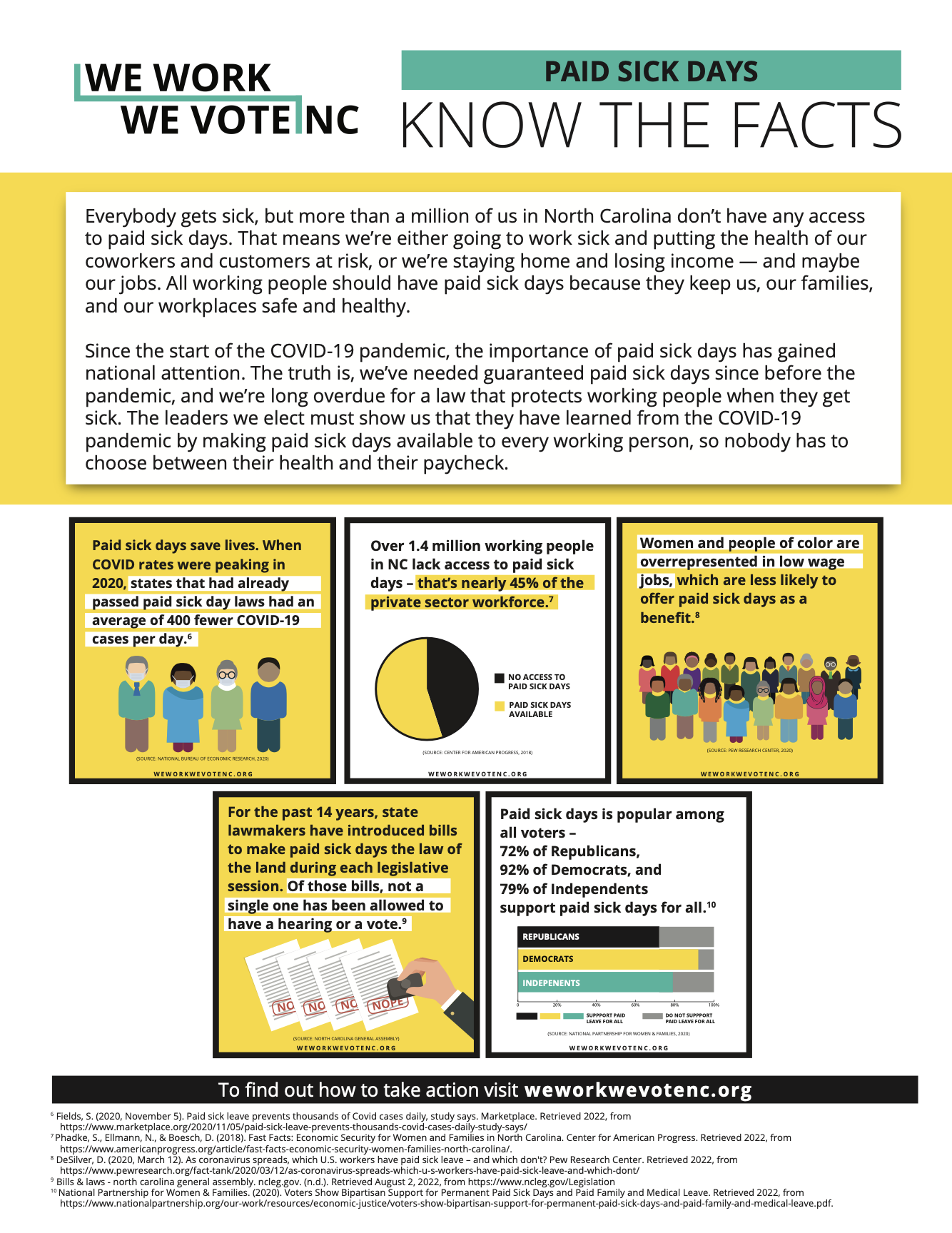Chronic stress results when stress lasts for an abnormally long time, either because it is repeated or occurs continuously. It poses a threat that is not easily diffused or avoided. This has direct implications for individuals experiencing intimate partner violence, because this type of violence is episodic, occurs with little to no warning, and poses a significant risk to an individual’s physical and mental wellbeing.
Allostatic load, or the wear-and-tear on the body that occurs in response to repeated or prolonged activation of a person’s stress systems, is associated with poor health outcomes for adults and children alike. These vulnerabilities are compounded among economically disadvantaged workers and individuals experiencing cumulative abuse.
Victims and survivors of intimate partner violence are often overlooked as a population in need of paid sick leave. Intimate partner violence impacts the work life of victims and survivors, resulting in missed work, lost wages, and diminished performance as a result of chronic stress and allostatic load. Understanding and mitigating the adverse health impacts of intimate partner violence requires consideration of the signs of abuse that don't present in the form of a visible black eye or bruise. Due to the health affects of chronic stress from an abusive relationship, victims and survivors are likely to benefit from access to employer-based paid sick leave.

